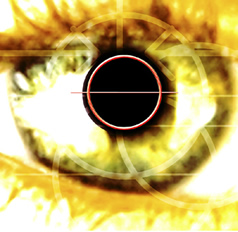Feb 10 2005
 Researchers at New York University have determined the location in the brain where involuntary attention enhances visual processing.
Researchers at New York University have determined the location in the brain where involuntary attention enhances visual processing.
The researchers, from NYU's Department of Psychology and Center for Neural Science, found that attending to, or selectively processing information from a given location without directing our eyes to that location, enhances performance in visual tasks as well as the neural activity underlying the processing of ensuing images. The results are published in the latest issue of the journal Neuron.
A sudden appearance of an object in our visual field will grab our attention--causing an involuntary reaction. Taosheng Liu, Franco Pestilli, and Marisa Carrasco, the researchers for the Neuron study, have previously investigated this process. Behavioral research from the Carrasco lab has shown that involuntary, or transient, attention improves performance in simple, early visual processing tasks--it actually helps us see things better. The NYU study in Neuron shows the neural basis of this effect. It identifies an increase in neural activity in areas of the brain that respond to the attended stimulus--that is, to the information that is selectively processed at a given location.
In this study, the researchers presented observers with two patches simultaneously in the periphery of their line of sight on a computer display: one tilted (target) and one vertical (distracter). They were asked to indicate whether the target was tilted to the right or to the left. Each display was preceded by a cue that was either on the same (cued location) or the opposite (uncued location) side of the target [see diagram of experimental trial]. The purpose of the pre-cue was to automatically attract observers' attention to its location. Importantly, the cue was completely uninformative regarding both target location and orientation, and observers were told so. Although there was no incentive to use the cue, observers still performed better when the target appeared at the cued location than when it appeared at the uncued location, confirming the reflexive nature of this type of attention orienting.
The researchers used functional magnetic resonance imaging (fMRI) to measure brain activity while observers performed this task inside the MR scanner housed at the NYU Center for Brain Imaging. This technology allows scientists to map activity in the visual cortex [see diagram of brain]. This experiment revealed that when a cue preceded the target, the target evoked a larger brain response than when the cue appeared in the other location. It also showed the magnitude of the cueing effect increased from the earliest to later areas of visual processing.
Liu, who earned his undergraduate degree from the University of Science and Technology of China, received his Ph.D. from Columbia University and currently is a postdoctoral researcher at NYU. Pestilli obtained his licentiate from the University of Rome and is an NYU doctoral student. Carrasco received her licentiate in psychology from the National University of Mexico before going on to receive her M.A. and Ph.D. in psychology from Princeton University. She is a professor of psychology and neural science and chair of NYU's Psychology Department.